Poldark: How film-makers bring the show to life
- Published
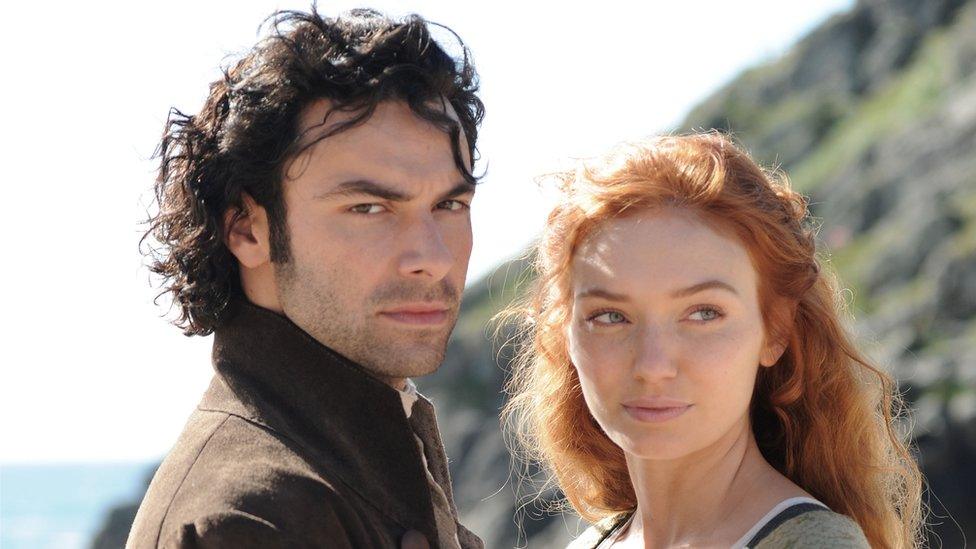
Aidan Turner stars as Ross Poldark, with Eleanor Tomlinson as Demelza
Hit TV costume drama Poldark is much more than rugged Cornish coastline, moody weather and the brooding looks of Aidan Turner. As the programme begins its second series, BBC News explores the lengths film-makers go to create a period piece - and the dilemma they face between historical accuracy and staying true to the story.

Historical advisor Dr Hannah Greig
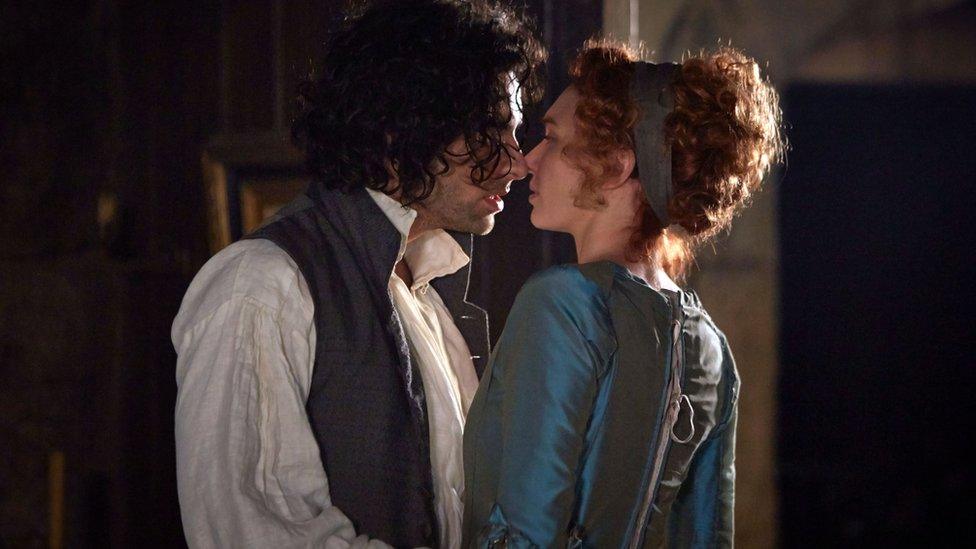
Ross with Demelza, who is wearing a blue dress which fastens at the back rather than the front
From checking appropriate use of language in the script to working out what a bow of a ship might look like in 1790, Dr Hannah Greig tries to ensure Poldark is as accurate as it can be.
But sometimes the show sacrifices historical accuracy for the sake of staying true to the novels, which were written by author Winston Graham in the late 1940s and early 1950s.
"In series one, when Ross and Demelza first have sex, her dress is not of an 18th Century construction as it opens at the back, whereas all dresses then would have fastened at the front," said Dr Greig
"But we stayed true to how Winston Graham described it in the novel - it's such a powerful and romantic scene - and because it's a fictional period drama we can stay true to those details in the book. The first source should be the novel."
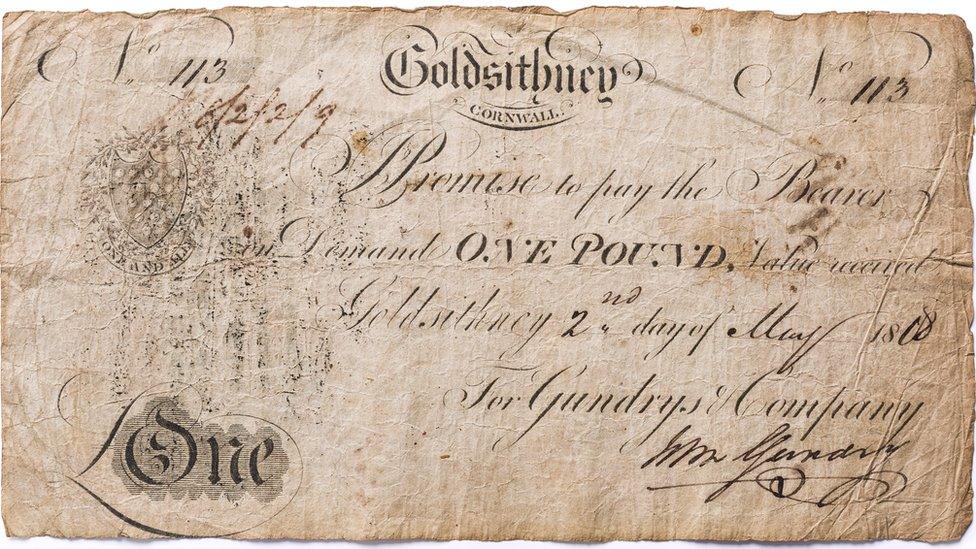
A surviving Cornish banknote
When researching for the show, the University of York lecturer says she always returns to 18th Century source material.
"I'll use things like Old Bailey records to see what words should be said in a courtroom. I have advised on the content of letters, adverts on a wall and what a children's book might look like."
Museum collections are also used - the Royal Cornwall Museum has a surviving 18th Century banknote.
"There are a lot of banknotes put down in Poldark, on tables and in deals. You can see how these museum collections inform set and costume designers."

Horse trainer Mark Atkinson
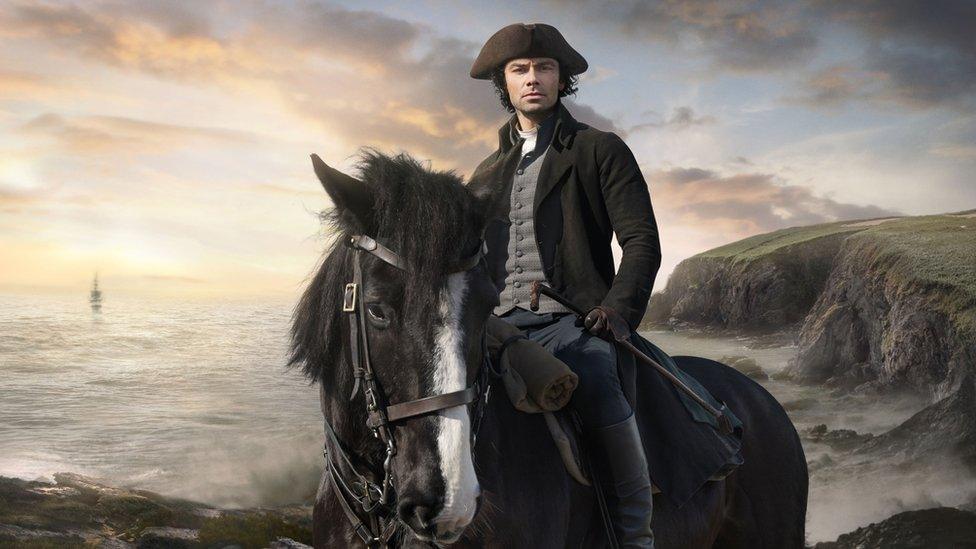
Ross Poldark, played by Aiden Turner, with his horse Seamus
Horse trainer Mark Atkinson, who provided 22 horses for series two, says it was like "love at first sight" for Aidan Turner and his horse Seamus.
"Aidan came to try the horses and I've never known an actor and a horse get on as well as these two do," he said.
People in 18th Century Cornwall would typically have got around on foot or on horseback.
"Because the roads were pretty terrible in Cornwall then, carriages wouldn't have been used to a great extent," he said.
George Warleggan, who is part of one of the richest families in Cornwall, has the biggest and most impressive horse.
"He tends to be looking down on the other characters, which was completely deliberate to give him an air of superiority," Mr Atkinson said.
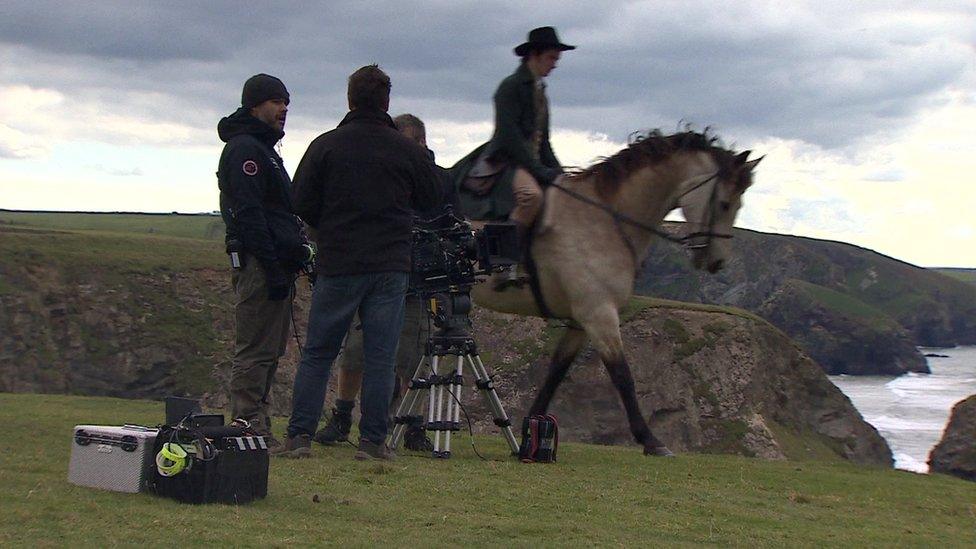
Mr Atkinson's horses are used in filming on the Cornish coast
The attention to detail does not stop there. Even the bridle Poldark uses reflects details about his character, and the time he spent fighting in the American War of Independence.
"The bridle that Ross uses is half military, which he brought back from fighting in the Americas, and half which his father left for him. He also has a bedroll which he used to use in the Americas and he has nickel stirrups that are from the period," Mr Atkinson says.
"For authenticity we use old documents, etchings, paintings - basically anything we can get our hands on.
"We also teach the actors to ride, it's one of my favourite things to watch. It's like painting a picture - teaching them to ride is like drawing the outline.
"You then need to work on all the detail and make sure they are comfortable on the horse and ride how the character would ride. You don't want Ross to look too correct, he needs to look relaxed and at home on the horse."

Food stylist Genevieve Taylor

Captain Ross Poldark returns from war
Food created for the show does not need to be eaten - but it should reflect the social standing of the character, says food stylist Genevieve Taylor.
She said there were tricks of the trade to make banquets look as good as possible on camera.
"I ended up wrapping pastry around two Quality Street tins to make a giant pie," she said. "It's the biggest pie I have ever made. The pastry was secured with cocktail sticks and I used loads of salt to make it extra shiny.
"With these creations, you don't know how long they are going to be sat about on set for - it's not the star of the show and is made with longevity in mind.
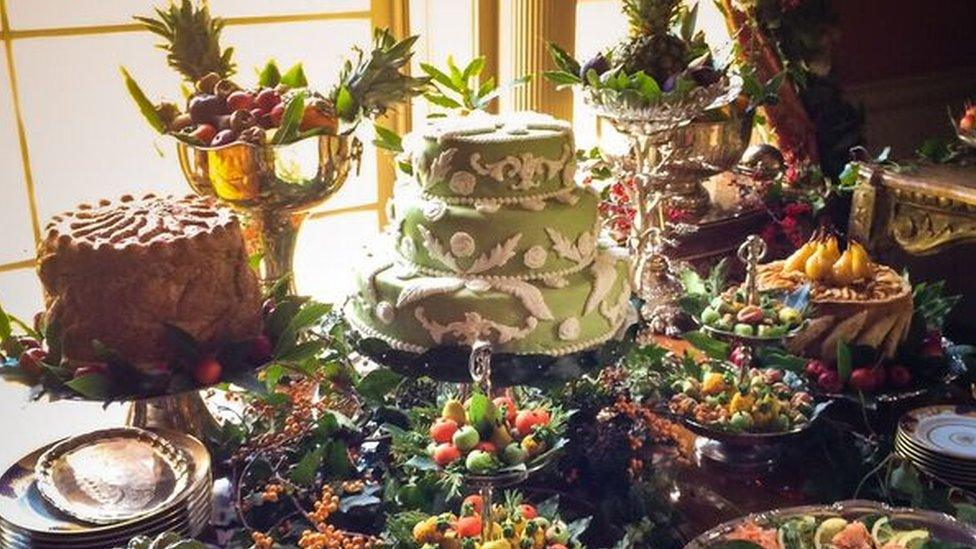
A spread prepared by Genevieve Taylor, including her giant "Poldark Pie"
"There is lots of historical information available, including cookbooks from the period. For example, the art department would get in touch and say we need food for a harvest supper for a well-to-do family.
"It's my job to make the food look correct for the time and make it beautiful."
Poldark returns to BBC One on Sunday 4 September at 21:00 BST. The Food Programme: Cooking for Poldark featuring food stylist Genevieve Taylor is broadcast on BBC Radio 4 Sunday 11 Sept at 12.30.
- Published1 September 2016
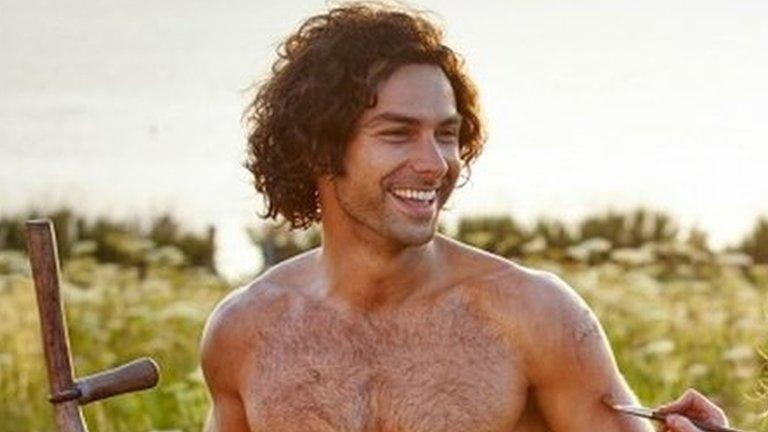
- Published6 July 2016
